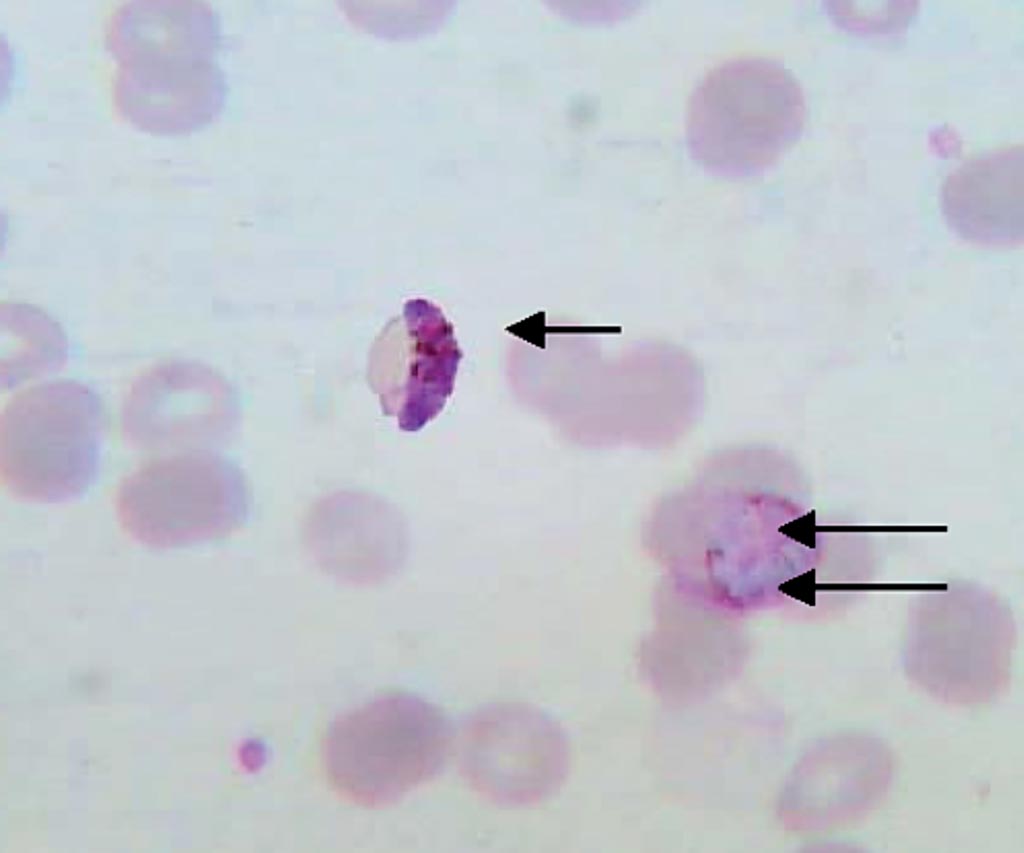Submicroscopic Malaria Prevalence Reported in Immigrants
By LabMedica International staff writers
Posted on 30 Jul 2019
Malaria remains the most important parasitic infection for humans, causing about 2,000 deaths per day, especially in African children younger than five years old. The importance of submicroscopic malaria infections in high-transmission areas could contribute to maintain the parasite cycle.Posted on 30 Jul 2019
Regarding non-endemic areas, its importance remains barely understood because parasitaemia in these afebrile patients is usually below the detection limits for microscopy, hence molecular techniques are often needed for its diagnosis. The prevalence of submicroscopic malaria among immigrants is unknown, and it is not clear if systematic screening or systematic treatment of immigrants from endemic areas would be necessary.

Image: Thin blood smear showing a Plasmodium falciparum gametocyte (single arrow) and a schizont of P. vivax (double arrow) from a mixed infection case (Photo courtesy of Sulekha Bhat et al).
Scientists collaborating with the Hospital Universitario 12 de Octubre (Madrid, Spain) conducted a prospective, observational, multicenter study of 224 afebrile immigrants. Microscopic observation of Giemsa-stained thin and thick blood smears, and two different molecular techniques detecting Plasmodium spp. were performed. The commercial real-time polymerase chain reaction detecting Plasmodium spp. was performed. When this PCR was positive, a differential real-time PCR detecting Plasmodium malariae, P. falciparum, P. vivax and P. ovale was performed (FTD Malaria Differentiation, Fast-Track Diagnostics). In addition to this, blood samples were sent to the National Centre of Microbiology where a multiplex nested PCR detecting the four Plasmodium species was performed to validate the commercial PCR.
The scientists reported that 14 patients were defined as submicroscopic malaria cases by PCR, yielding a prevalence of 5.7% (95% confidence interval 3.45–9.40). In 230 patients (94.3%) all microbiological tests for malaria were negative. In 71.4% of the positive PCR/negative microscopy cases, Plasmodium falciparum alone was the main detected species (10 out of the 14 patients) and in four cases (28.6%) Plasmodium vivax or Plasmodium ovale were detected. One patient had a mixed infection including three different species.
The authors concluded that the prevalence of submicroscopic imported malaria found in this study was similar to that previously described by other authors in non-endemic areas in afebrile immigrants, namely P. vivax and P. ovale were involved in an important percentage of these infections. Screening protocols for afebrile immigrants with molecular techniques could be useful not only for a proper management and treatment of submicroscopic infections but also to prevent the potential reintroduction of malaria in areas where the vector is present. The study was published on July 17, 2019, in the Malaria Journal.
Related Links:
Hospital Universitario 12 de Octubre













